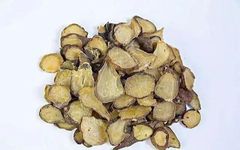Aconite is the first medicine in TCM for reviving yang and rescuing from reversal. There are over a hundred classical formulas recorded in TCM that include Aconite, among the most commonly known are Aconite Decoction (Fu Zi Li Zhong Tang), Aconite Soup (Fu Zi Tang), Aconite Warm Middle Decoction (Fu Zi Wen Zhong Tang), Aconite Build Middle Decoction (Fu Zi Jian Zhong Tang), and Aconite and Ephedra Decoction (Fu Zi Ma Huang Tang). Below, let us explore in detail the efficacy and functions of the herb Aconite.
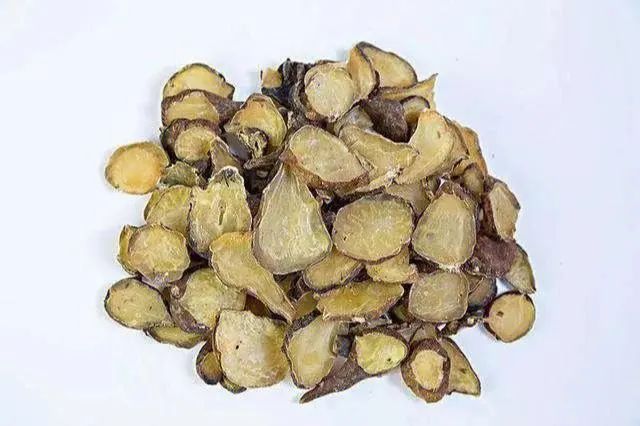 Aconite is also known as Fu Pian, Yan Fu Zi, Hei Shun Pian, and Bai Fu Pian.
Aconite is also known as Fu Pian, Yan Fu Zi, Hei Shun Pian, and Bai Fu Pian.
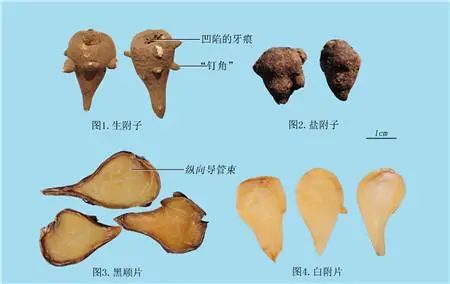
The medicinal part is the processed root of the Ranunculaceae plant Aconitum. It is harvested from late June to early August, removing the main root, fibrous roots, and soil, commonly referred to as “Ni Fu Zi”. It is processed according to size: ① Salt Aconite selects larger Ni Fu Zi, cleans the soil, and soaks it in a mixture of brine and table salt, taking it out daily to dry, gradually extending the drying time until a large number of crystalline salt particles appear on the surface and the texture hardens. ② Black Shun Pian selects medium-sized Ni Fu Zi, cleans it, soaks it in brine for several days, boils it with brine, removes it, rinses it, cuts it into thick slices, then soaks it in diluted brine, adding a coloring agent made from brown sugar and vegetable oil to dye the slices a dark tea color, rinsing until there is no numbing sensation, then steaming until cooked, drying until semi-dry, and finally sun-drying. ③ White Fu Pian selects smaller Ni Fu Zi, cleans it, soaks it in brine for several days, boils it until thoroughly cooked, removes the skin, cuts it into thin slices, rinses until there is no spicy sensation, then steams until cooked, dries until semi-dry, and finally dries after sulfur fumigation.
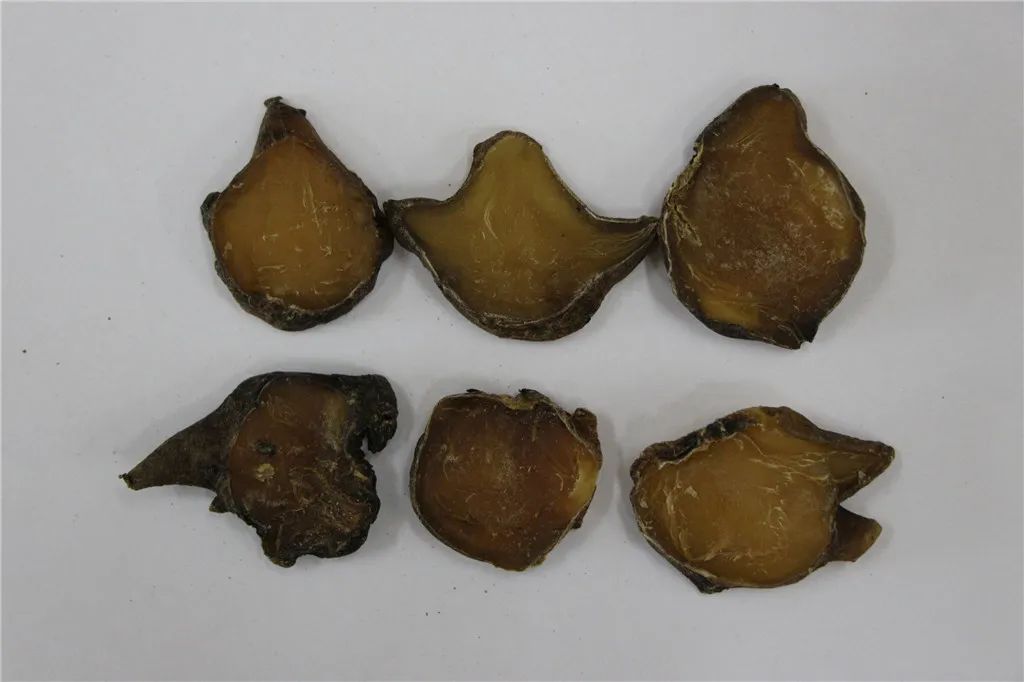 The plant morphology of Aconite is a perennial herb, 60-120 cm tall. The tuberous roots usually grow in pairs, spindle-shaped to inverted oval, with a black-brown outer skin; cultivated varieties have very large lateral roots (child roots) with a diameter of up to 5 cm. The stem is erect or slightly inclined, smooth and hairless at the bottom, with soft hairs scattered on the upper part. The leaves are alternate, leathery, with petioles; the leaf blades are oval, 5-12 cm wide, 3-lobed nearly to the base, with the lateral lobes further divided, and the central lobe is rhombic and wedge-shaped, with three shallow lobes at the tip, and the edges of the lobes have coarse teeth or notches. The inflorescence is a racemose cyme, with the inflorescence axis having soft hairs; there are 5 sepals, blue-purple, with fine soft hairs on the outside, the upper sepal is helmet-shaped, 15-18 mm long, about 20 mm wide, and the lateral sepals are nearly round; there are 2 petals, hairless; there are many stamens, with the lower half of the filaments expanded into wide linear wings; there are 3-5 carpels, free, densely covered with gray-yellow short hairs. The follicle is elongated, with transverse veins, the style persists, and the tip is awned. The flowering period is from June to July, and the fruiting period is from July to August.
The plant morphology of Aconite is a perennial herb, 60-120 cm tall. The tuberous roots usually grow in pairs, spindle-shaped to inverted oval, with a black-brown outer skin; cultivated varieties have very large lateral roots (child roots) with a diameter of up to 5 cm. The stem is erect or slightly inclined, smooth and hairless at the bottom, with soft hairs scattered on the upper part. The leaves are alternate, leathery, with petioles; the leaf blades are oval, 5-12 cm wide, 3-lobed nearly to the base, with the lateral lobes further divided, and the central lobe is rhombic and wedge-shaped, with three shallow lobes at the tip, and the edges of the lobes have coarse teeth or notches. The inflorescence is a racemose cyme, with the inflorescence axis having soft hairs; there are 5 sepals, blue-purple, with fine soft hairs on the outside, the upper sepal is helmet-shaped, 15-18 mm long, about 20 mm wide, and the lateral sepals are nearly round; there are 2 petals, hairless; there are many stamens, with the lower half of the filaments expanded into wide linear wings; there are 3-5 carpels, free, densely covered with gray-yellow short hairs. The follicle is elongated, with transverse veins, the style persists, and the tip is awned. The flowering period is from June to July, and the fruiting period is from July to August.
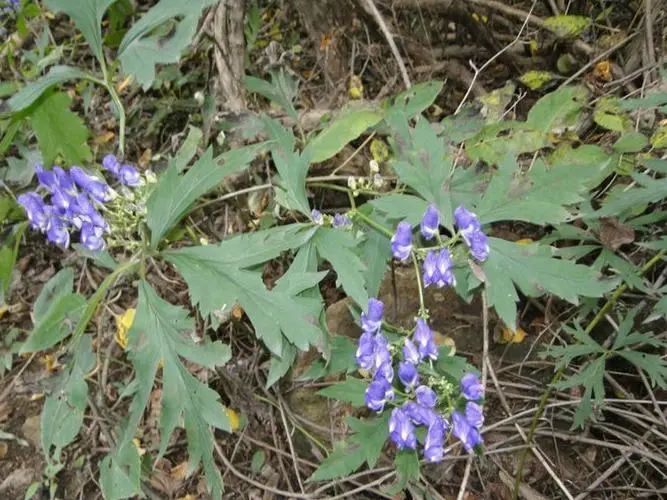
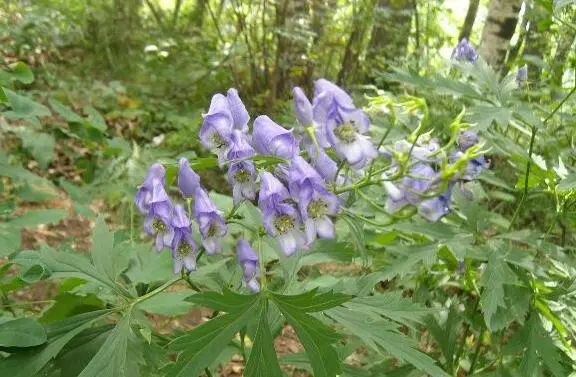 Meridian Affinity: Heart; Kidney; Spleen
Meridian Affinity: Heart; Kidney; Spleen
Taste and Properties: Spicy; Sweet; Hot; Highly Toxic
Precautions: Contraindicated in cases of Yin deficiency with Yang excess, true heat with false cold, and in pregnant women.
Functions and Indications: Revives yang and rescues from reversal; supplements fire and assists yang; disperses cold and eliminates dampness. Indicated for loss of yang leading to collapse; cold limbs with weak pulse; impotence with cold in the palace; cold pain in the heart and abdomen; prolonged diarrhea due to deficiency-cold; water retention due to yin-cold; yang deficiency with external pathogens; wind-cold-damp bi syndrome; yin sores and ulcers.
Dosage and Administration: For internal use: decoction, 3-9 g (processed product), for reviving yang and rescuing from reversal, can use 18-30 g; or in pills or powders. For external use: appropriate amount, ground into powder for application, or cut into thin slices to cover the affected area or acupoints, and moxibustion with moxa. For internal use, it should be processed and cooked for a long time; for external use, raw products are often used.
 The Efficacy and Functions of Aconite
The Efficacy and Functions of Aconite
1. The warming effect of Aconite on the spleen and stomach is mainly manifested in its ability to warm the middle and disperse cold, enhancing the functions of the spleen and stomach, and promoting digestion and absorption. In TCM, the spleen and stomach are the “central” and “fundamental” of the human body. When their functions are poor, it can lead to a series of gastrointestinal issues. Aconite, through its warming and dispersing cold effect, can improve the cold condition of the spleen and stomach, enhance digestive and absorptive capacity, thereby alleviating symptoms such as cold pain in the stomach, abdominal distension, and loss of appetite caused by poor spleen and stomach function.
2. The cold-dispelling pain-relieving effect of Aconite is mainly manifested in its ability to eliminate internal cold evil and relieve cold-type pain. TCM believes that cold evil invading the body’s meridians can lead to obstruction of qi and blood flow, causing cold bi syndrome.
3. Aconite has a warming effect that can expel internal cold evil, relax the meridians, and promote the circulation of qi and blood, thereby alleviating cold-type pain. Aconite is effective for diseases such as rheumatoid arthritis, cold damp bi pain, and abdominal pain.
4. Aconite has a drying dampness effect, which can eliminate internal dampness and improve damp-type conditions. In clinical practice, Aconite is often used as an adjunct for damp-heat jaundice, eczema, diarrhea, and other conditions.
In summary, the herb Aconite has the functions of warming the spleen and stomach, dispelling cold pain, and drying dampness. Its rich toxic components and other ingredients can exert analgesic, antibacterial, and cold-expelling pharmacological effects. In clinical applications, Aconite is often used as an adjunct for cold bi, rheumatism, and pain syndromes. However, due to its high toxicity, it should be used under the guidance of a physician, with attention to dosage and method of use.
 Contraindications for Aconite
Contraindications for Aconite
The herb Aconite is widely used as an adjunct for rheumatic diseases, bi syndromes, and spleen and stomach deficiency. However, despite its significant pharmacological effects, Aconite also has certain toxicity. Therefore, it is important to note that certain specific populations should avoid using Aconite to prevent adverse reactions.
1. Pregnant and breastfeeding women should avoid using Aconite. The components of Aconite contain highly toxic secondary cardiac toxins, which can have toxic effects on the fetus and infants. These toxins can enter the placenta or breast milk through the bloodstream, potentially leading to developmental abnormalities or severe poisoning reactions in the fetus or infant.
2. Young children should also avoid using Aconite. Due to their incomplete physical development, children have relatively low drug metabolism capabilities and are more sensitive to the toxic reactions of drugs. Therefore, administering Aconite to children not only increases the risk of toxic side effects but may also adversely affect their growth and development.
3. The elderly should also exercise caution when using Aconite. As age increases, the liver and kidney functions of the elderly gradually decline, and their drug metabolism capabilities also weaken. Therefore, elderly individuals using Aconite are at risk of drug accumulation or toxicity. Moreover, Aconite has a certain stimulating effect on the heart of the elderly, which can easily lead to arrhythmias and other adverse reactions.
In conclusion, although traditional Chinese medicine Aconite has certain pharmacological effects, it also has certain toxicity. Therefore, when using Aconite, it is necessary to use it rationally according to the characteristics of contraindicated populations. Different populations should pay special attention to avoid using Aconite to prevent adverse reactions, ensuring the safety and effectiveness of the medication.
Note:This account aims to promote TCM culture, and the TCM knowledge mentioned in the text is for learning and exchange purposes only.
WeChat has been updated! If you neither★starred me, nor liked or

